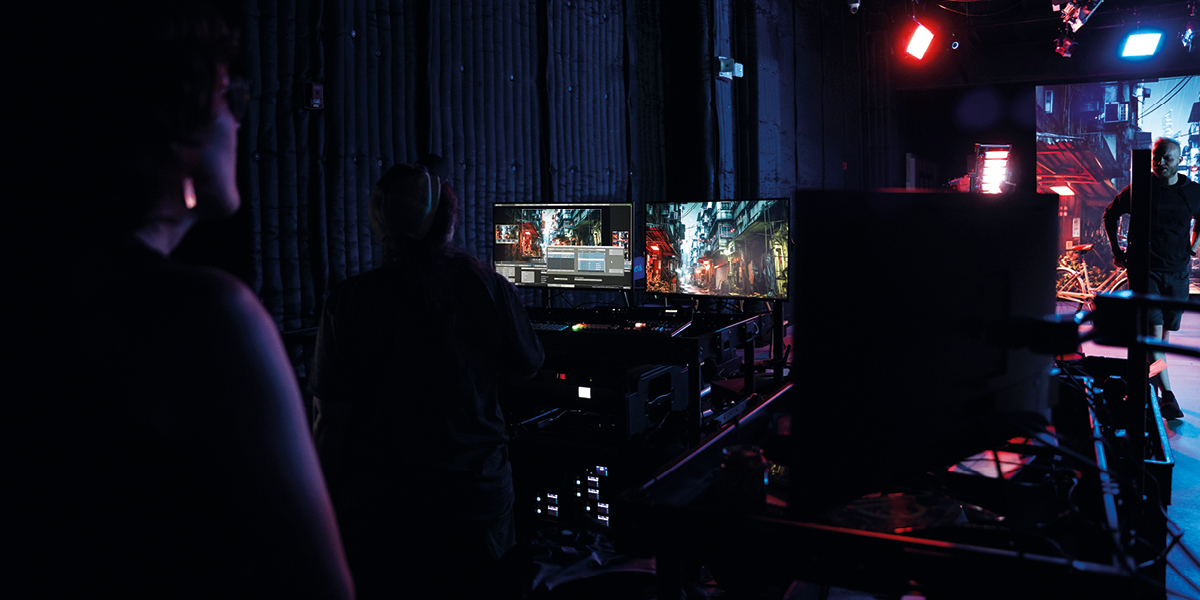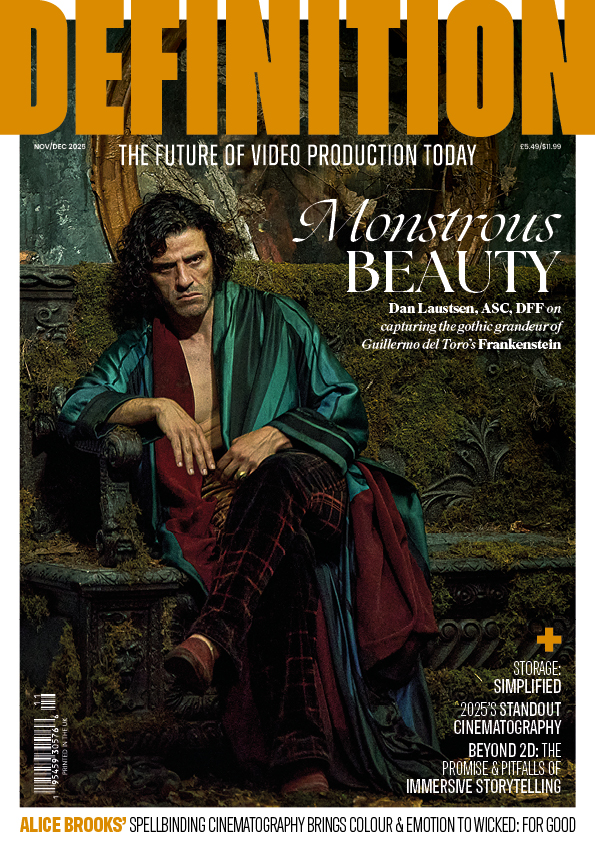
True Colours
Posted on Jun 2, 2024 by Samara Husbands
The art of colour precision
Phil Rhodes takes a look at the challenges & solutions for achieving LED colour control
Anyone who’s bought a light in the last few years might have concluded that the LED revolution has reached a point of maturity.
However, people who have bought two lights during that time, especially if they’re from different manufacturers, might have identified some issues that need to be addressed.
And anyone applying that technology to virtual production will be painfully aware of how difficult it can be to get any two things to look the same colour.
Jon Miller is vice-chair of the Lighting Committee from the ASC’s Motion Imaging Technology Council, an organisation well-placed to help out. He describes the state of the art as pretty capable: “Most fixtures which are five-channel have come up with a combination of LED sources, whether that’s RGB plus warm and cool white, phosphor-converted reds, amber and cyan; whatever that combination is, you now get high-quality colour. Yes, there’s still an opportunity to keep iterating on that. There were once quite a few LED fixtures which were not achieving both full-spectrum white light and saturated colour at the level I thought necessary to be useful on films. But we have crossed that threshold, I think.
“Now it’s really a question of control, and allowing the user to exploit that hardware,” Miller proposes. “I think the issues became clear around 2018, as the real onrush of multi-chip LEDs became widely adopted across film and TV products. It became clear that not only were there issues with matching, there are now ways to do something about it. With two white light emitters, there weren’t many levers to pull, so there wasn’t much interest in addressing it. Now fixtures can match others.”
It’s clear, though, that this sort of initiative doesn’t need to keep anyone from exploring the outer edges of a light’s capabilities. “End users can choose to go beyond the matching abilities and use them for other things,” Miller confirms. “We’re not a standards committee, so these would all be best-practice-type documents, but we’re addressing three challenges. There’s a colour science subcommittee to figure out which is the most practical and useful colour space recommendation. Then we have integrated systems, which look at virtual production, but overall their remit is control systems. The last one is education and outreach. The issue is that, frankly, it’s going to take years to roll out across the industry and for people to understand it.”
To date, much of the committee’s work has been behind the scenes, but Miller expects to see more public engagement soon. “We have a bit of an iceberg problem with the committee: it’s all happening under the surface. The education and outreach part is where hopefully you’ll start to see some movement in the next 18 months. Despite the fact a lot of work has been done, it’s been done internally. Everyone involved is a volunteer – and the R&D schedules of manufacturers represent a not-insubstantial investment.”
That creates a complex situation, which has only recently started to see solutions.
Anyone with a need for advanced colour control in 2024 might consider the technology that’s being applied to virtual production, bringing post-production tools to the lighting department.
Mazze Aderhold handles product design and worldwide support for Assimilate’s Live FX, which makes it possible for background plates, 3D rendered scenes and lighting effects to interact with huge flexibility for both technical and creative adjustments.

“You can flag your video clip with a colour space, and you can also flag your display output that goes to an LED wall, and Live FX will convert from one to the other – and it’s the same for individual lights, which can be tagged with a colour space,” Aderhold explains. “We support all the colour spaces and transfer functions of every manufacturer, and all the standardised ones. That’s a pure technical conversion that doesn’t include tone mapping. It’ll be technically correct, but won’t look great out of the box. To make it look the way the DOP wants, Live FX ships with all the colour grading tools in the world.”
Similar things are possible for Image-Based Lighting, with the software capable of understanding the behaviour of individual lighting devices. Both Miller and Aderhold concur on the idea that lighting might soon begin to implement the same sort of colour standards used in video. It’s been particularly relevant to Assimilate’s work, as Aderhold reflects: “We’ve been doing video for the last 20 years, and went into the lighting business… now all our video stuff is being requested for lighting purposes.”
Standardising communications, then, has never been more necessary – and given the huge range of ways in which lighting devices are built, it’s essential that lighting manufacturers observe standards, since it isn’t practical for control applications to assume full external control of the hardware.
“When you get into lights which have amber, lime and cyan LEDs in them, we can’t possibly do the mathematics to go from RGB to RGBACL because we have no idea about the electronics in all those fixtures,” Aderhold states. “We send RGB data to the fixture and the manufacturer takes this and does the mathematics to control the amber, cyan and lime light emitters from that. The image content we’re playing back to a wall or a light is all RGB-based anyway, and you have to calculate a white, a cyan, an amber and a lime colour from that at some point in the pipeline. But the light manufacturer knows best how to do that.”
In practical circumstances, gaffers may prefer an approach based on hue, saturation and value, which separates brightness from colour so that the overall brightness of the light can be controlled independently.
This is, Aderhold says, still a work progress. “We’re not yet 100% sure precisely what is expected. Many fixtures have a dedicated dimmer channel to make them brighter or darker. We also have the RGB gains and a master gain… if I have RGB data and I dial down the master gain, it probably doesn’t just get darker, it might also appear more or less saturated – that’s what we need to separate from each other.”
For now, software like Live FX seems likely to remain the answer, for the simple reason that it provides such a rich toolset. “You get the tools from post for live virtual production,” Aderhold continues. “You can dial in a sunset look or do crazy stuff like a sky replacement – if the director doesn’t like the sky, you can go ahead and put in a new one. Or key certain colours, desaturate just the reds because they pop too much, or make a particular colour pop a little more because it should.”
The result will be a blurring of concerns which were once distinct. It might also mean more computer horsepower on-set in order to handle real-time video effects. “It just depends on what you are doing,” Aderhold suggests. “A primary grade – colder, warmer, whatever – that’s background noise to the GPU even at higher resolutions. As soon as you key something and want to blur your key, you really need something beefy.
“It’s where the industry is moving towards,” Aderhold concludes. “The difference between video walls and lighting starts to blur massively, and that’s not only in the way you drive those things, but also in the nomenclature. Gaffers are now asking to colour manage their lighting set-up – they want to use their own RGB matrices or load 3D LUTs onto fixtures. It turns out all our video stuff is becoming more and more relevant in the lighting world.”
This feature was first published in the June 2024 issue of Definition.








